35:51
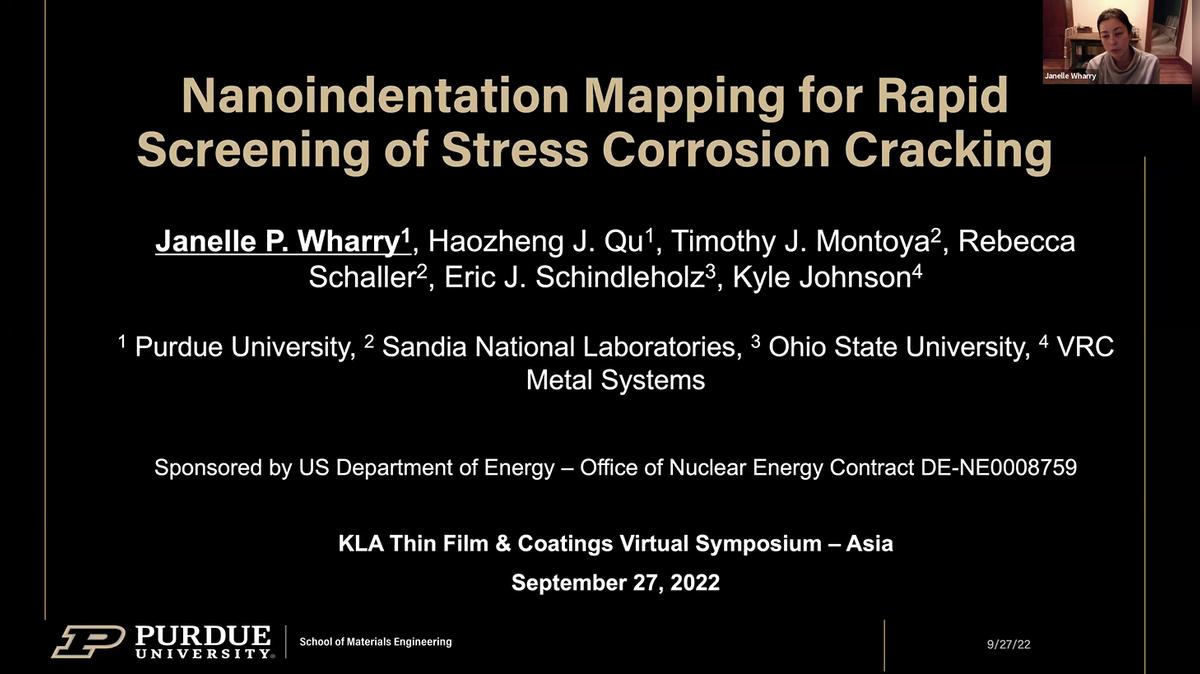
Dr. Janelle Wharry of Purdue University discusses her group's use of nanoindentation mapping to characterize stress corrosion cracking (SCC) of steel that is used in storing spent nuclear fuel. The research analyzed the nanomechanical properties before and after radiation exposure.
31:48
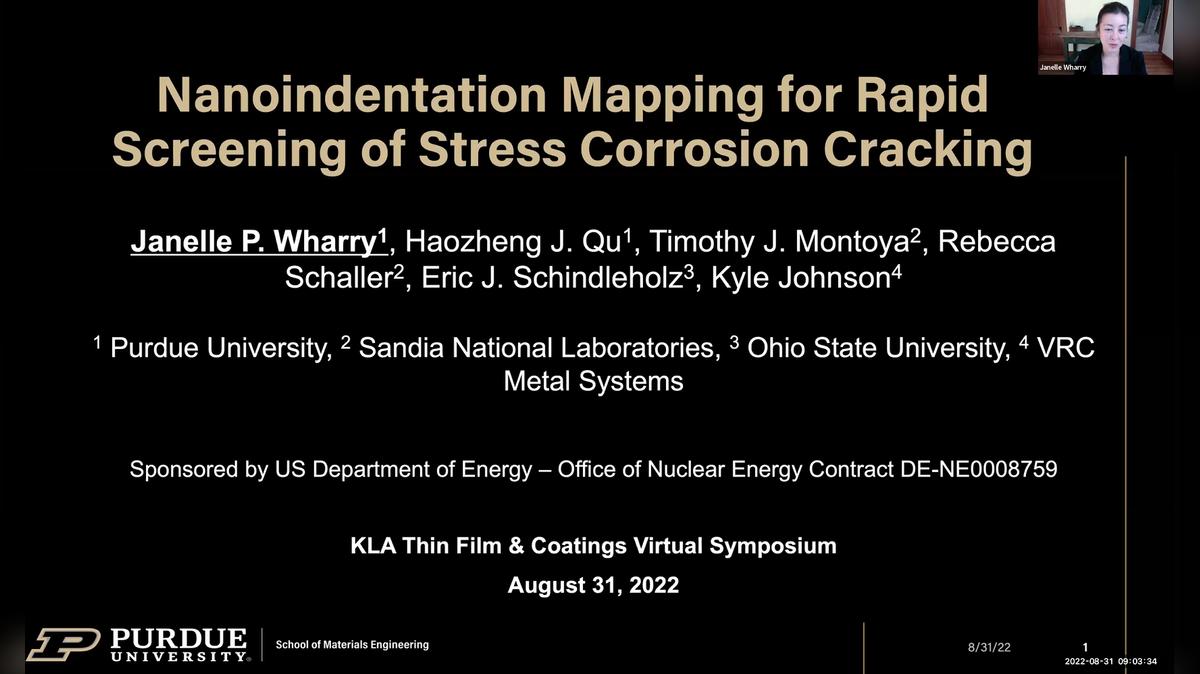
Dr. Janelle Wharry of Purdue University discusses the use of nanoindentation mapping to understand chloride-induced stress corrosion cracking (SCC) mechanisms in cold spray (CS) coatings used as corrosion mitigation barriers. In addition. Dr. Wharry discusses hardness mapping of grains and along cracks induced by stress corrosion.
36:25
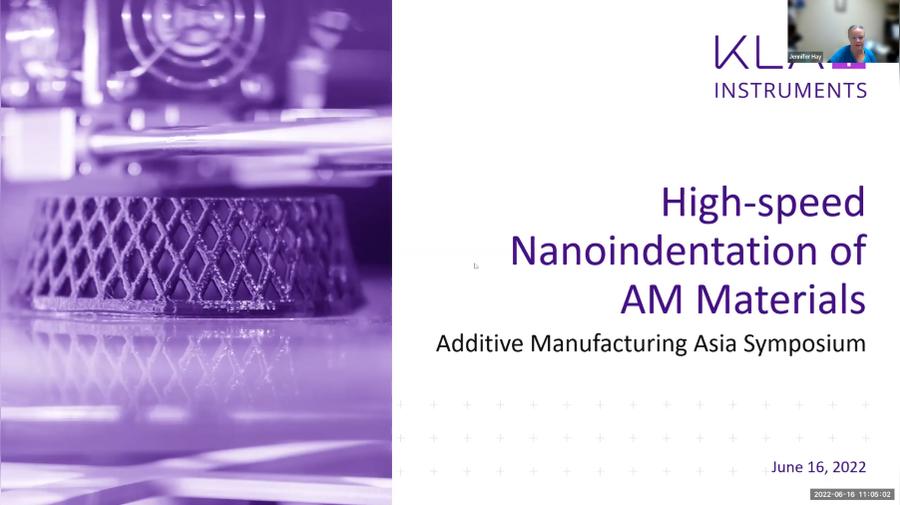
Jennifer Hay of KLA Instruments discusses the use of nanoindentation on for 3D printed materials, and provides a demonstration of high-speed mechanical properties mapping using the iMicro nanoindentation system.
28:41

Professor Yu Zou of the University of Toronto discusses his research in a number of case studies, using nanoindentation techniques to characterize AM-printed materials.
24:08
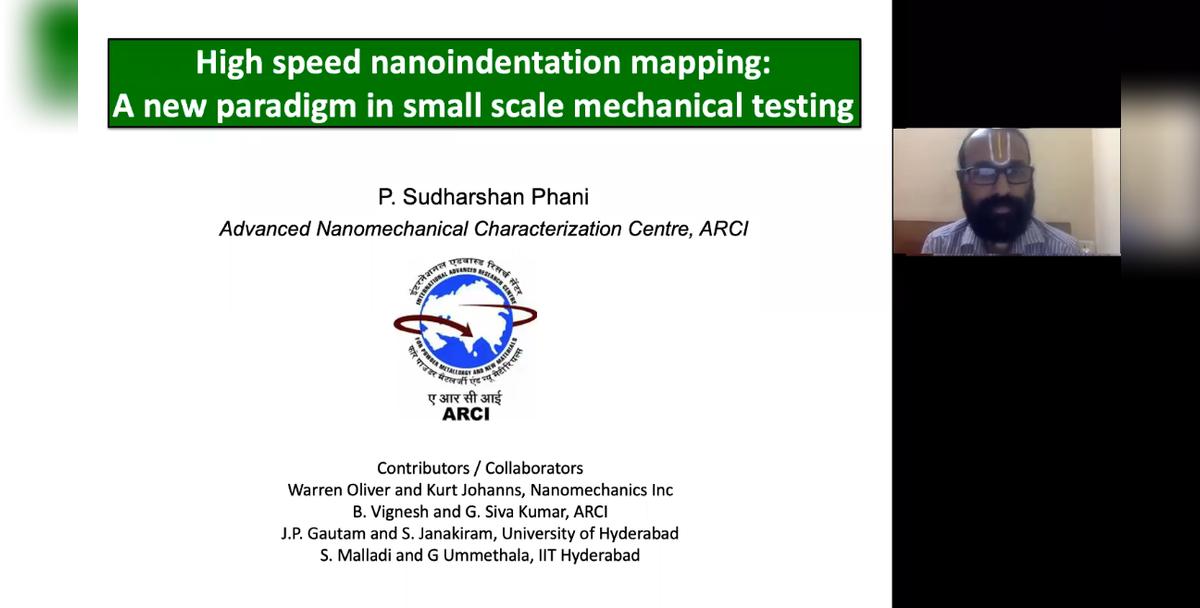
Dr. Sudharshan Phani of the Advanced Nanomechanical Characterization Centre of ARCI (International Advanced Research Centre) presents his work in English.
09:55

Bryan Crawford of KLA Instruments presents in English with Chinese subtitles. 演讲嘉宾:KLA Instruments - Bryan Crawford(英文演讲,配中文字幕)
20:49
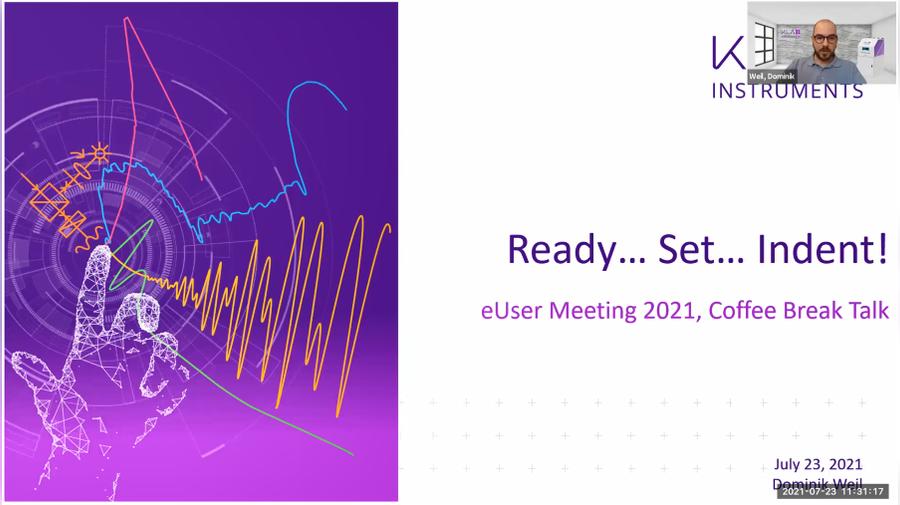
Dominik Weil of KLA Instruments presents fun and unusual nanoindentation applications.
22:54

Coffee Break #4: Bryan Crawford of KLA Instruments discusses methods for clustering NanoBlitz 3D nanoindentation data.
01:00:15
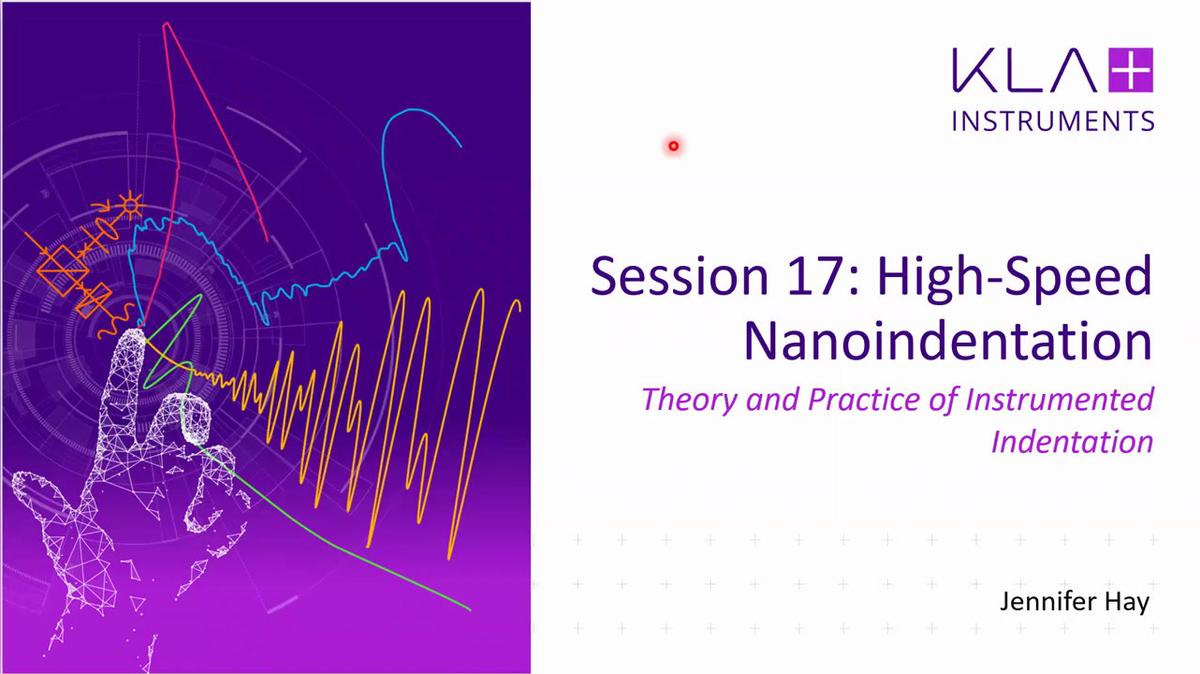
With careful attention to instrumentation and software, nanoindentation experiments can be accomplished at a rate faster than one second per indent. High-speed indentation opens new doors for statistical analysis and mechanical-properties mapping.
30:37

Dr. Warren Oliver provides an overview of applications in nanoindentation and examines recent research on high resolution mechanical properties mapping.
10:33

Intrinsic hardness of each constituves phases of PcBN were evaluated. Three main hardness peaks were assessed which attributed to TiN binder, cBN particles and composite like phase. Hardness of cBN particles may vary in terms of Boron/Nitrogen ratio.